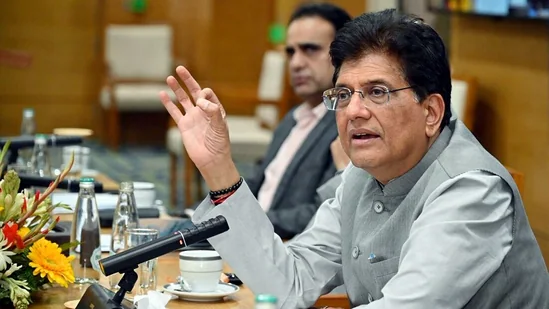India’s Strategic Edge: Understanding the Javelin Missile Deal and Its Defence Impact
- MGMMTeam

- 4 minutes ago
- 4 min read
India’s defence partnership with the United States has advanced significantly with Washington’s approval of a major sale involving the FGM-148 Javelin anti-tank missile system and M982A1 Excalibur precision-guided artillery rounds. Valued at approximately US $93 million, the package strengthens India’s expanding arsenal and reflects deepening strategic alignment between the two democracies. The U.S. Defense Security Cooperation Agency (DSCA) described the deal as consistent with America’s foreign-policy objectives, noting that it enhances India’s ability to counter both present and emerging threats across diverse terrains and operational conditions.
This decision comes at a time when India has been accelerating modernisation across its forces, particularly in areas requiring rapid-response, portable, high-precision weapons. The Javelin system fits squarely into this broader transformation, offering capabilities that significantly upgrade India’s frontline anti-armour potential.

The Javelin: A Modern Battlefield Game-Changer
The FGM-148 Javelin is recognised globally as one of the most sophisticated man-portable anti-tank weapon systems in service today. Developed jointly by Lockheed Martin and Raytheon, the missile draws its strength from its fire-and-forget guidance technology, which enables the operator to launch the weapon and immediately take cover while its infrared seeker autonomously homes in on the target. This ensures high survivability for the soldier and allows quick repositioning during combat, a major advantage in both mountainous regions and urban warfare.
One of the most defining features of the Javelin missile is its top-attack flight profile. Instead of striking a tank head-on, the missile climbs, arcs, and then descends to hit the vehicle from above, where the armour is thinnest. This gives the weapon deadly efficiency against even heavily armoured main battle tanks. The system is equally effective in direct-attack mode, allowing it to be used against bunkers, buildings, and low-flying helicopters.
The missile’s soft-launch design enables firing from enclosed spaces such as bunkers or houses without exposing the operator to dangerous backblast. Its command launch unit (CLU) comes equipped with advanced thermal imaging and optics, doubling as a reconnaissance device even when not firing. With an effective range extending up to four kilometres, the Javelin has been combat-tested in multiple theatres, most notably in Ukraine, where it has proven its effectiveness against modern Russian armour.
What the Deal Means for India’s National Security
For India, the introduction of the Javelin system marks a significant leap in infantry capabilities. The country faces the long-term challenge of two nuclear-armed neighbours with substantial armoured formations. In such an environment, the ability to neutralise tanks and mechanised columns swiftly, accurately, and safely is indispensable. The Javelin provides Indian forces with a reliable shoulder-launched system that bridges capability gaps in mobile anti-tank operations while complementing indigenous systems currently under development.
In addition to its battlefield role, the acquisition strengthens India’s deterrence posture. The mere presence of a modern anti-tank missile like Javelin complicates the strategic calculus for any adversary considering armoured incursions along India’s borders. With tensions periodically arising along both the western and northern fronts, the timing and choice of this system underscore India’s focus on preparedness.
The DSCA has confirmed that India is fully capable of absorbing and integrating these systems into its existing command and logistical structures. Furthermore, reports indicate that India has initiated discussions for co-production of Javelin missiles under “Make in India”, signalling the possibility of long-term defence industrial cooperation and partial technology transfer. Such a development would not only reduce dependence on foreign suppliers but also accelerate the growth of India’s defence manufacturing ecosystem.
Navigating Challenges and Future Prospects
While the Javelin is a high-performance weapon, it comes with challenges that India must navigate. The system’s cost is substantial, and sustained procurement will require careful budgeting, especially as India simultaneously invests in artillery modernisation, fighter aircraft upgrades, naval expansion, and indigenous ATGM programs. Co-production, if finalised, will help reduce long-term expenses and ensure availability of spares and future variants.
The integration of a foreign platform must also be balanced with the progress of India’s indigenous anti-tank guided missile projects, such as the Defence Research and Development Organisation’s MPATGM. Harmonising foreign procurement with domestic innovation will be key to sustaining a balanced and self-reliant defence framework.
Despite these challenges, the introduction of the Javelin significantly strengthens India’s immediate operational capabilities while opening doors to industrial partnership, advanced training, and long-term defence cooperation with the United States.
The MGMM Outlook
The Javelin missile deal represents a significant moment in India’s defence evolution, and from our viewpoint, it reflects a strategically mature India that is choosing precision, mobility, and survivability as core principles of modern warfare. The acquisition of the FGM-148 Javelin system strengthens India’s preparedness against armoured threats across challenging terrains, especially considering the two-front scenario with Pakistan and China. What makes this deal even more important is that it aligns perfectly with India’s long-term goal of tactical superiority on the battlefield—whether in mountain warfare, rapid response operations, or urban conflict zones. The Javelin’s combat-proven “fire-and-forget” capability, top-attack mode, thermal imaging CLU, and operational flexibility give Indian soldiers a level of confidence and protection that older systems simply couldn’t deliver.
Beyond battlefield capability, we see this decision as a strategic reinforcement of India–US defence cooperation, signalling a deeper alignment with global partners who support India’s rise as a secure and self-reliant power. The possibility of future co-production under Make in India shows that New Delhi is not just purchasing weapons—it is shaping the future of its defence ecosystem by blending indigenous progress with high-end foreign technology. This deal strengthens deterrence, enhances India’s tactical edge, and opens the door to long-term industrial collaboration. From our perspective, the Javelin partnership is not an isolated acquisition but a deliberate move to elevate India’s defence posture for the next decade and beyond.
(Sources: Livemint, India Today, Firstpost)




Comments